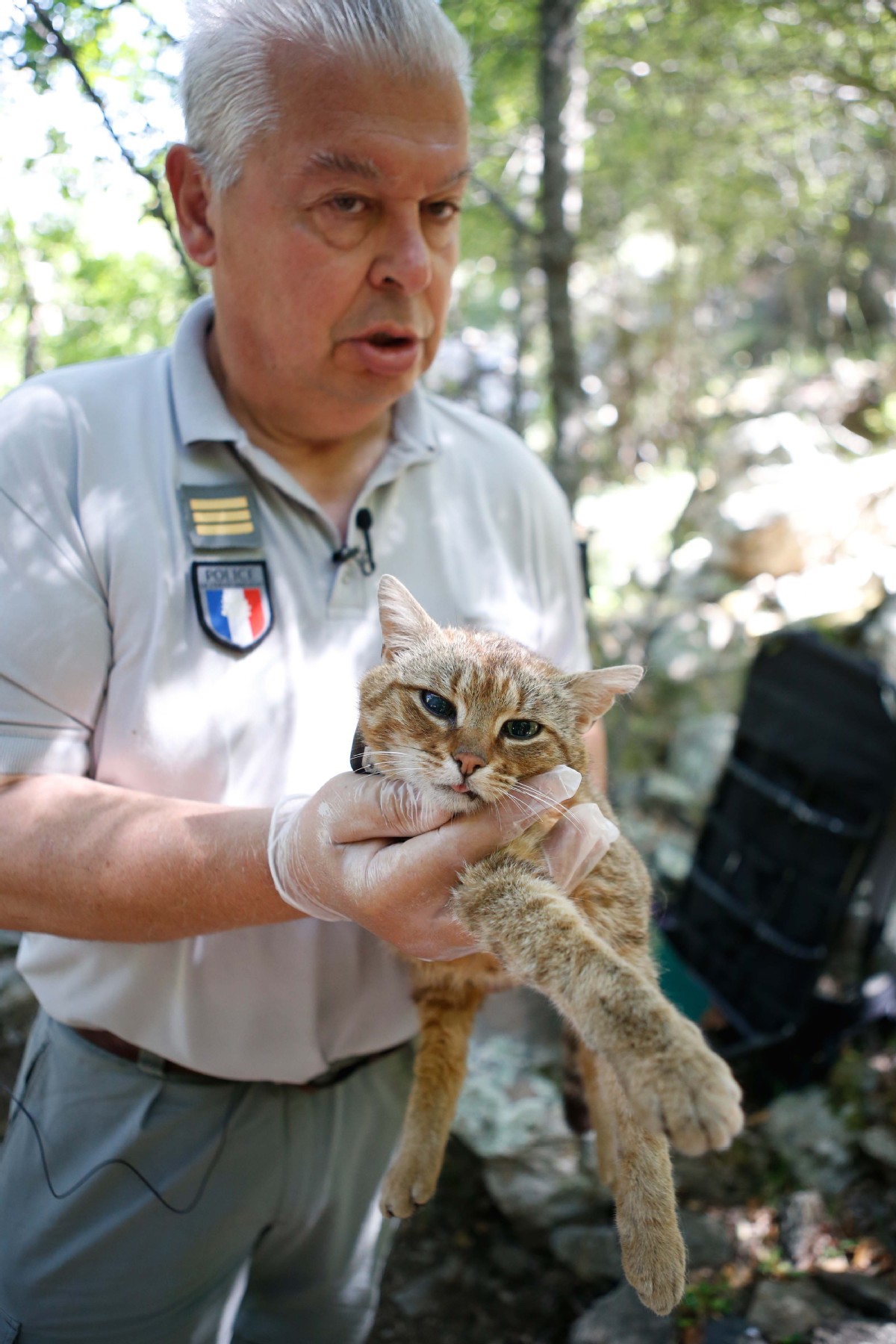Corsica's 'cat-fox' may be a new species
China Daily | Updated: 2019-06-21 10:49

ASCO, France - In the forest undergrowth of northern Corsica, two wildlife rangers open a cage to reveal a striped, tawny-coated animal, one of 16 felines known as "cat-foxes" on the island thought to be a new species.
"We believe that it's a wild natural species which was known but not scientifically identified because it's an extremely inconspicuous animal with nocturnal habits," said Pierre Benedetti, chief environmental technician of France's National Hunting and Wildlife Office.
"It's a wonderful discovery," he said, holding the feline - called "ghjattu volpe" in Corsican - found in Asco Forest on the French Mediterranean island.
While resembling a domestic cat in some ways, the ring-tailed feline measures 90 centimeters from head to tail, has "very wide" ears, short whiskers and "highly developed" canine teeth.
Other distinguishing features include the stripes on the front legs, "very dark" hind legs and a russet stomach. The dense, silky coat is a natural repellent for fleas, ticks and lice.
The tail usually has two to four rings and a black tip.
"It's their size and their tail that earned them the name 'cat-fox' across the island," Benedetti said.
The animals are found in a remote habitat where there is "water and plant cover offering protection against its main predator, the golden eagle," said Carlu-Antone Cecchini, a Wildlife Office field agent in charge of forest cats.
With advanced photographic and later physical traps, the researchers captured their first "cat-fox" in 2016.
Using nonviolent methods, the office since then has captured at least a dozen 12 of the cats seen in the area, releasing them again after a quick examination.
Now, they say, they hope to have "this cat recognized and protected" within two to four years.
"The cat-fox is part of our shepherd mythology. From generation to generation, they told stories of how the forest cats would attack the udders of their ewes and goats," said Cecchini.
Research got under way and, in 2012, with the help of a method involving essence attractive to cats and a wooden stick the animals rubbed against leaving traces of their fur. Researchers were then able to determine the genetic makeup.
There are still many mysteries surrounding the cat.
Its diet and reproductive patterns are yet to be studied but Benedetti has a theory that the cat could have been brought to Corsica by farmers around 6,500 years BC.
"If the hypothesis is true, its origins are Middle Eastern," he said.
Agence France - Presse
























